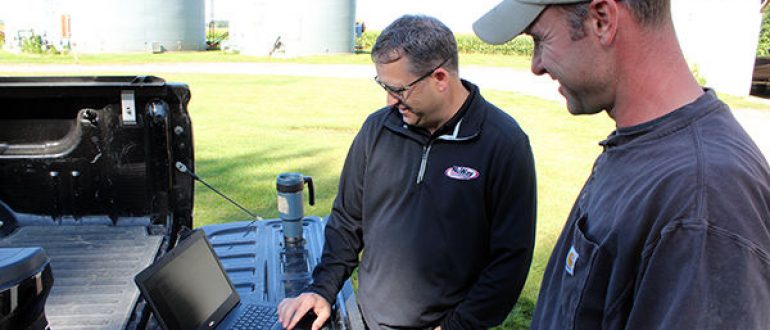
Tracking progress: South Dakota dairies participate in pilot project to measure sustainability (Tri State Neighbor Feature)
“It’s not only about what we do, but how we do it.”
That’s the take Jean-Michel Dos Remedios has on a new pilot program Bel Brands is kicking off at three South Dakota dairies.
Three dairies who deliver milk to the Brookings plant that makes Baby Bel snack cheese will start tracking sustainable farming practices used in growing feed for their milk cows.
Dos Remedios is senior purchasing director for Bel USA, based at the company’s Chicago headquarters. He spoke with the Tri-State Neighbor over Zoom about the new pilot program, a partnership with Land O’Lakes that uses the company’s Truterra Insights Engine to track crop system changes.
“We have the same kind of goals,” Dos Remedios said, noting Bel’s mission to produce “sustainable food for all.” The main goal is to reduce greenhouse gas emissions, he said. Improving soil health is another.
While it’s one thing to have a sustainability goal and a plan for reducing environmental impact, putting hard numbers to those efforts is another. That’s where the Truterra program will help farmers measure the impact and economics of different stewardship practices such as no till and cover cropping.
“Dairy farmers, since the beginning of time, are on a path of continual improvement,” said Bob Lefebvre, vice president of Ag Affairs at Midwest Dairy, the regional checkoff group. He noted advances in cow care, genetics and soil health as ways farmers are increasing sustainability. “Now we’re capturing those metrics. They can see our progress and be able to share that with consumers.”
He noted a pre-pandemic survey from the Heartland Research Group that showed 70% of consumers would like to see companies’ sustainable practices be more transparent, and 81% globally said it was very important or extremely important that companies implement programs that help the environment.
“During the pandemic this has only become more front of mind,” he said, noting that especially applies to Millennials and GenZ consumers.
The U.S. dairy industry contributes 2% of the world’s greenhouse gas emissions, according to a 2010 report from the Innovation Center for U.S. Dairy. That comes mostly through cow rumination.
A study by the U.S. Department of Agriculture’s Agricultural Research Service around the same time measured emissions at a 10,000-head dairy in Idaho. On average, the facility generated 3,575 pounds of ammonia, 33,092 pounds of methane and 409 pounds of nitrous oxide every day, with its open lot areas contributing the most.
New goals set by the Innovation Center for U.S. Dairy call for the dairy industry to reach “net-zero” greenhouse gas emissions by 2050. Those sustainability goals cover water quality, water usage and carbon neutrality.
Tracking improvements toward those goals will help show consumers how dairy is good for the planet, Lefebvre said.
“It’s giving us a platform as an industry to be part of the environmental solution,” he said.
While such data could be rolled into blockchain technology that has the ability to link a block of cheese to a dairy and the land that fed those cows, Dos Remedios said that may be a nice tool to use in the future, it’s not the intention of this program.
The three participating dairies couldn’t be named, he said, but the number of participating dairies will grow over the three-year pilot program.
“The goal is to have all farms that deliver milk to us use this,” Dos Remedios said. “When you can partner between the farmer and the processor … I think that’s a really powerful partnership,” he added. “You have the whole chain working together.”
—
Janelle is editor of the Tri-State Neighbor, covering South Dakota, southwestern Minnesota, northwestern Iowa and northeastern Nebraska. Reach her at [email protected] or follow on Twitter @JLNeighbor.